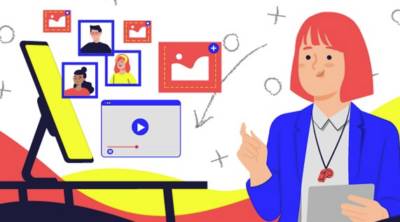< Back to all posts
What Are Deepfake Videos and How Can You Protect Your Brand?
Artificial intelligence is the hottest term in business right now. Seemingly every company is excited to harness the power of AI, looking to the technology for efficiency benefits and more. But there is a potential dark side to AI tools, one exemplified by deepfake videos and the spread of manipulated media.
These convincing false videos use generative AI technology to create the appearance that public figures are saying things they’ve never said. To imagine the risk factors here, simply imagine the effect on brand perception if your business’s CEO was portrayed on a fake video making misleading or offensive statements.
The rise of deepfake video as a tool for reputational attacks and phishing schemes calls for more advanced security and messaging measures specifically aimed at these threats.
Deepfake Videos: Definition and Examples
What exactly is a deepfake video? It’s a synthetic video created with deep learning AI technology and designed to deceive viewers about what they’re seeing. Using this technology, attackers can make it appear that a person of their choice is speaking or acting in a way of their choosing.
As the algorithms powering deepfake creation become more advanced and powerful, these videos are becoming harder to detect and more worthy of attention. While it may seem too early to formulate responses or defenses for such a new technological concept, these deceptive videos have already been used to launch attacks.
The two main types of deepfake attacks include:
- Reputation attacks: Deepfake video clips aiming at individuals’ or companies’ reputations can make it appear that people are performing embarrassing or illegal actions, or simply spread misinformation. If these clips repeating false information go unchallenged, they could have a short- or long-term effect on companies’ valuations.
- Social engineering attacks: Audio or video snippets purporting to give employees instructions can serve as an advanced form of phishing. Attackers can ask for money or access to privileged data. Commpro pointed out that these hacks are especially risky in today’s virtual business environments: Remote communications are common, so it’s easier than ever to believe leaders are giving orders via audio or video.
Examples of deepfake technology being used for malicious purposes include:
- A 2020 incident in which thieves convinced a bank to transfer $35 million to their account. Bank of America explained that this attack was a business identity compromise (BIC), and didn’t even require video or fake image creation — it was carried out entirely by audio. The thieves used a falsified voice recording of an executive authorizing the movement of the money. The result was the largest dollar-value deepfake attack known.
- The proliferation of propaganda videos spread by social media platform bot accounts. TechTarget highlighted a group called Spamouflage, which creates automated social network profiles for fake individuals. These profiles share deepfake videos in support of Chinese foreign policy interests, showing how automation can power campaigns designed to shift public opinion.
The risks are clear. The attacks are real. This means your business will need to plan its response to synthetic media and deepfake AI frauds — ideally before you become the victim of one.
Security for the Deepfake Era
Being prepared to guard against AI threats means taking a few different measures. For instance, you should lock down your raw video and audio information to avoid giving attackers the raw materials they need to create more authentic-looking deepfake AI videos. It’s a good time to learn about file security and cloud transfer solutions that can move your large video files privately.
You should also be ready to launch a counteroffensive via a well-crafted video strategy. If you have a pipeline to create high-quality videos, imagery and audio releases, you can respond to any disinformation in a timely manner, while also establishing your brand’s authentic content in viewers’ minds and making it harder to fool your audience.
Expert Video Services and Security Tech
The quickest way to build a responsive, tech-infused video strategy is to work with experts. This approach allows you to continually adopt the latest in video production technology without making out-of-pocket expenditures on the gear. The professionals tasked with using that equipment have the know-how to deal with deepfake technology and similar AI threats, whether through secure file management or real video content creation.
There’s another side to working with expert video creators in the age of AI tools — these services can also help you see the positives of AI video creation. The same type of generative AI technology that empowers attackers to generate fake content may also give you the ability to build accessibility features into your videos, ideate efficiently and make advanced edits.
To learn about video creation, AI, security and all the many intersections between them, download our eBook.








Leave a Reply